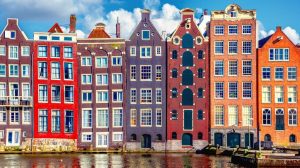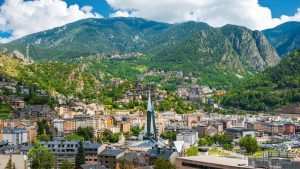
What first comes to mind when you think of spa?
Probably Iceland, Velingrad, or Karlovy Vary.
Yet the title The City of Spas belongs to another metropolis, which is also called The Queen of the Danube. This city is Budapest.
It is home to Europe’s largest synagogue and biggest spa, and it’s the only capital in the world where you’ll find caves underneath its streets.
In this guide, we will unravel tons of spicy details and astonishing facts about Budapest.
Ready to explore? Let’s go!
Start Planning Your Trip to Budapest with Our BEST Recommendations:
⭐ Top Tours in Budapest ⭐
📍 Budapest Grand Tour – the highlights of Buda and Pest, including the Parliament.
📍 Danube Cruise with Prosecco – unlimited prosecco and Budapest at night.
⭐ Best Accommodations in Budapest ⭐
🏨 Monastery Boutique Hotel Budapest – our top pick near Buda’s main attractions.
🏨 Bohem Art Hotel – this funky, hip hotel has the vibe of an art gallery.
⭐ Easiest Transportation Options in Budapest ⭐
🚍 Budapest Card – enjoy discounts, free travel, and entrances to museums.
🚍 Discover Cars – compare and find the best rates for car rentals.
✅ Note: This article contains affiliate links. In case you purchase something through one of these links, we may receive a small commission at no extra cost to you. Thank you for helping us keep creating the free content on this website!
Peculiar Facts about Budapest That You Probably Didn’t Know
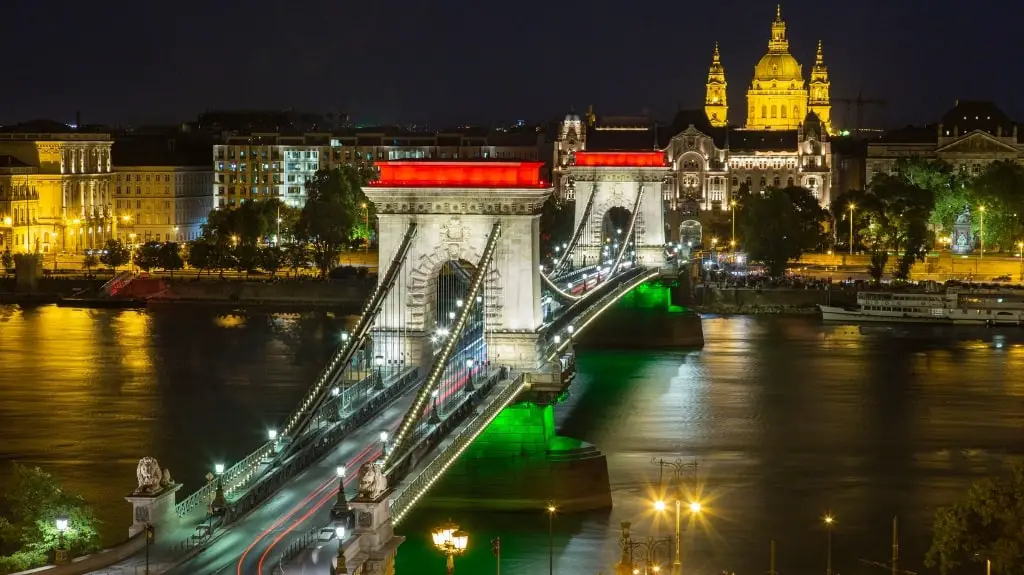
In this section, you’ll discover interesting Budapest facts you probably weren’t aware of. If you like relaxing at the spa, you’ll love #5.
- The name Budapest consists of the names of the cities which united to form the Hungarian capital. In 1873, Buda and Pest officially merged with Óbuda (literally Old Buda), creating the new metropolis of Budapest.
- Budapest was the twin capital of the Dual Monarchy. From 1867 to 1918, Hungary was part of the Austro-Hungarian Empire. When in 1873 Buda, Pest, and Óbuda unified, they became the co-capital of the empire, alongside Vienna.
- Eight gorgeous bridges connect Buda and Pest. The first permanent bridge to span the Danube River was erected in 1849. Today, the Chain Bridge is a popular attraction. You can walk from one side of the river to the opposite in around 20 minutes. We have to warn you, though – you might stop more than once for photos as the views from the bridge are stunning.
- Budapest is called the Queen of the Danube. The European city proudly wears this name. Some argue that Vienna deserves the title, but Budapest beats it in the category The Greatest Variety of Styles. When you visit Budapest, you’ll have the chance to explore a city with a rich history, a unique food scene, and multiple sites on the UNESCO World Heritage List. To check whether or not Budapest deserves the title, take a sightseeing cruise on the Danube.
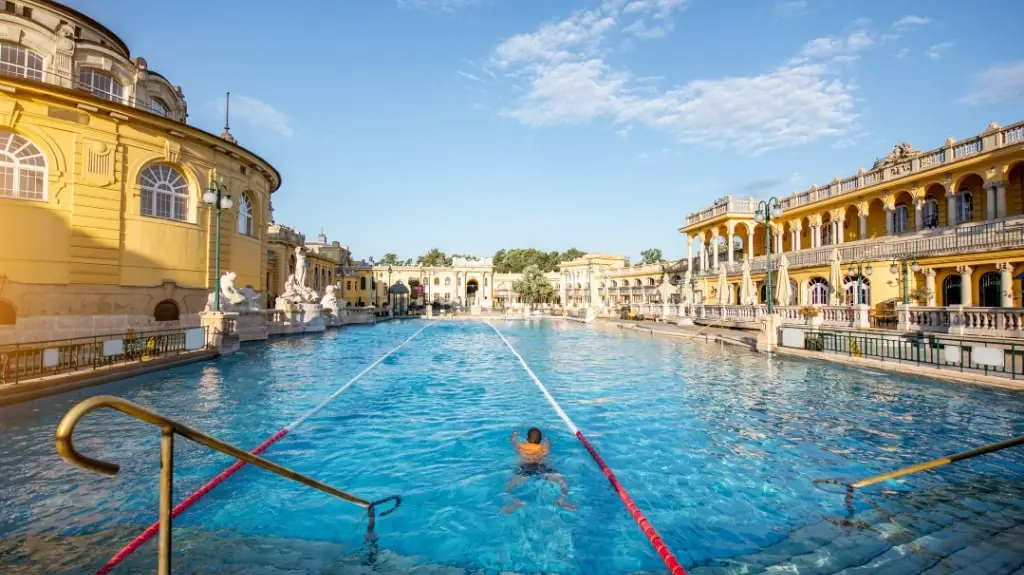
- Another nickname for Budapest is The City of Spas. Roman legionnaires were the first to recognize the city’s healing thermal springs over 2,000 years ago. Today, you can choose from five medicinal baths featuring a total of 47 pools. They vary in terms of size and architecture. So, no surprise that our best Budapest travel tip for you is to bring a swimsuit.
- The largest spa in Europe is in the Hungarian capital. Visiting Széchenyi Thermal Bath is great for both rejuvenating and healing. Two thermal springs with temperatures varying from 165°F to 171°F (74-77°C) supply the water to the hundred-year-old baths. It has 15 indoor and three gigantic outdoor pools.
- Hippos at the zoo love to splash in thermal waters as well. Another surprising fact about Budapest is that the water in which hippos swim at the Budapest Zoo comes from the Széchenyi Medicinal Bath. The recycled geothermal waters even contributed to the fertility of the animals. A baby hippo was born in 2012 which was unusual for the species in captivity. The water has a positive effect on the marvelous creatures because the composition is close to that of the Nile basin.
- Budapest was not the first Hungarian capital. King Béla IV, King of Hungary and Croatia at the time, made Buda capital in the middle of the 13th century. Before that, Hungary’s capital was Esztergom. The city stands 29 mi (46 km) north of Budapest and is one of the oldest settlements in the country.
- Budapest is the only capital in the world that hides caves underneath its streets. In fact, a whole city exists beneath Castle Hill. The subterranean world consists of a maze of 200+ caverns. They are the result of the great number of geothermal springs in the area. You can visit many of the caves on a guided spelunking tour.
Facts About Budapest’s Attractions and Landmarks
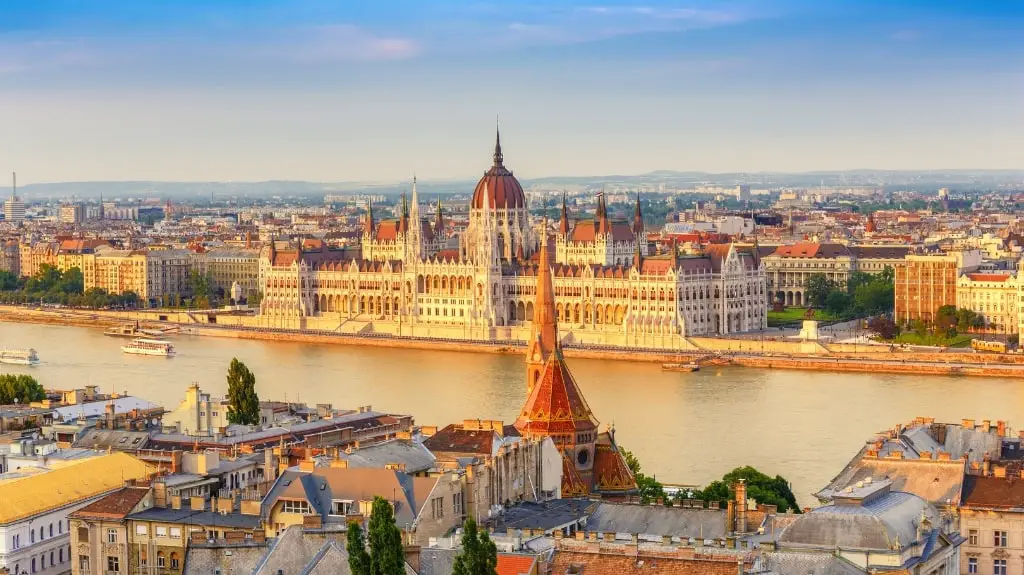
The Hungarian capital boasts majestic palaces, marvelous temples, and astonishing structures. Let’s find out the most surprising facts about Budapest’s landmarks.
- The Hungarian Parliament Building is the 3rd-largest national assembly in the world. It’s also the biggest building in Hungary and Budapest’s top attraction. More than 150 people work tirelessly to keep it in top shape each day. The Parliament covers an area of 194,000 sq. ft. (18,000 sq. m) and features 691 rooms, 28 entrances, 10 courtyards, and 29 staircases. The exterior is a mixture of three architectural styles – Neo-Gothic, Neo-Romantic, and Neo-Baroque – which further contributes to its splendor.
- Budapest hosts one of the most horrifying museums on the planet. As you walk in, the word “terror” hangs above your head. You can see the sky through the open-cut letters. Before it turned into a museum, the House of Terror served subsequently as a Nazi and as a Soviet headquarters. The violent regimes detained, questioned, tortured, and killed many people inside this spooky building.
- You can visit the underworld at the Buda Castle Labyrinth and learn about its wild history. Apart from its caves, Castle Hill also hides an intricate maze of tunnels. Many believe their length is close to 6 mi (10 km). In Medieval times, they were used as shelters and prisons. Nowadays, Budavari Labirintus is a museum. You’ll discover Gothic and Renaissance monuments, as well as Turkish tombstones, in winding corridors and vaulted rooms.
- No building in Hungary can rise more than 96 m (314.9 ft.). There’s a peculiar reason for that. The regulation takes into account a symbolic number for Hungary. In the year 896, the Magyars founded the Hungarian Kingdom. Nowadays, two buildings rise above the skyline of Budapest at exactly 96 m. These are the Hungarian Parliament Building and St. Stephen’s Basilica – representing state and religion, respectively.
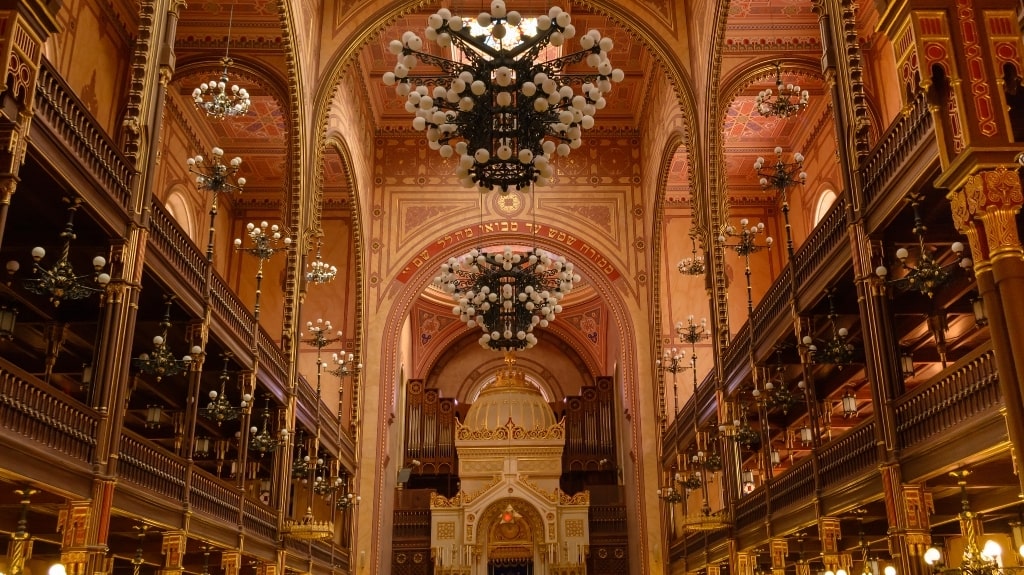
- The largest synagogue in Europe is located in Budapest. Finished in 1859, the Great Synagogue is the second-largest in the world, after the Great Synagogue in Jerusalem. The Dohány Street Synagogue carries the Moorish Revival style and is inspired by the Alhambra Palace in Spain. The second-largest European synagogue is in Sofia, Bulgaria.
- Budapest has the second-oldest subway system in Europe and the third-oldest in the world. Only the Tube in London and the Underground in Chicago are older than the Budapest subway system. It has been operating since 1896, making it the oldest in continental Europe. In 2002, UNESCO added the M1 Line of the Subway to its World Heritage Sites because of the innovative elements of the railway.
- An underground hospital unveils the horrors of the Soviet Union. During World War II and the 1956 Revolution, a cave under Buda served as a bomb shelter and a military hospital. The government declassified the hospital’s existence in 2002. However, the Hospital in the Rock remains frozen in time and full of mysteries and untold stories.
- Many buildings in Budapest have holes in the walls. The randomly scattered punctures are, in fact, bullet holes. They’re a dark reminder of the violent attacks from 1956 and the suppressed national uprising against the communist regime.
- Budapest is home to a cave chapel. A poor family inhabited the cave in the 19th century. They built a small house in its opening. In the 1920s, a group of Pauline monks constructed an entrance to the cave. Six years later, the chapel was consecrated. You can find it just below Gellért Hill on the banks of the Danube River.
Interesting Facts About the People of Budapest

Budapest has given its fair share of geniuses to the world. In this section, you’ll discover some of the most note-worthy people who were born or lived in the city, as well as peculiar facts about the Hungarians.
- The Rubik’s cube is a Hungarian invention. Not many people know this fact about Budapest, but Ernő Rubik was born in the Hungarian capital. An inventor, architect, and professor of architecture, he invented the world-famous cube in 1974.
- A law regulates Hungarian names. When it comes to choosing your children’s names, in Hungary, you’d have to follow the naming law. The name must come from a pre-approved list. The Research Institute for Linguistics of the Hungarian Academy of Sciences must accept any deviations. That’s the reason many Hungarians have the same names – and everybody has a name’s day.
- The world’s most famous escape artist was born in Budapest. Harry Houdini revolutionized the world of stunts and illusions. Born Erik Weisz and raised in Budapest, his work was historically significant because he paved new roads in the world of deception and imaginative entertainment.
- A statue in Budapest can supposedly turn you into a great writer. The monument stands in the City Park and depicts a 13th-century chronicler. According to the legend, if you touch his pen, you’ll miraculously gain great writing skills. Looking at the polished surface of the pen, it seems that many people believe that. However, in our experience, authentic travel is what turns you into a great storyteller.
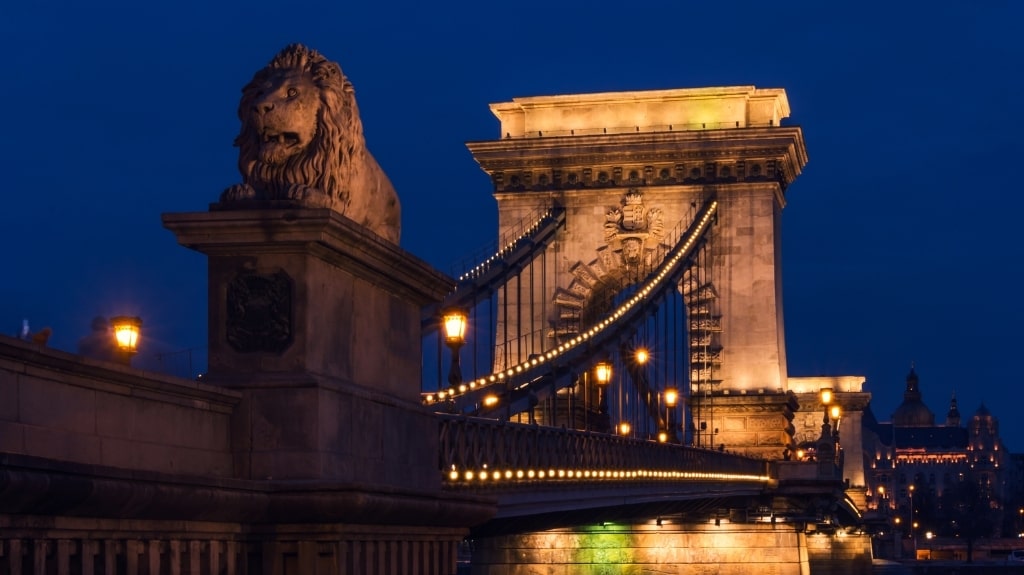
- Another urban legend says that the architect of the Chain Bridge killed himself of embarrassment. Before the opening, he had proudly declared that his statues were perfect, and if somebody found anything wrong, he’d kill himself. At the inauguration of the magnificent bridge, a boy shouted that the lions which guard the four ends didn’t have any tongues. Embarrassed, the architect jumped into the Danube River. However, this is also just a legend. The lions have tongues, you just can’t see them from the street.
- Budapest hosts Islam’s north-most holy place. Budapest was home to a Turkish dervish named Gül Baba. He came to Hungary during the Ottoman invasion in the 16th century. He was honored as a holy man. After his death in 1541, his tomb in Buda became an Islamic sacred place and a site of pilgrimage. The chapel, erected between 1543 and 1548, is one of the few remaining Turkish buildings in Budapest.
- You can find tributes to the victims of the Holocaust on the banks of the Danube River. Hungary was one of the biggest sufferers of the gruesome World War II. Next to the Parliament, by the edge of the Danube River, you’ll see bronze shoes fixed to the ground. They are a tribute to the Hungarian Jews who were killed during the monstrous war.
Scrumptious Budapest Food Facts
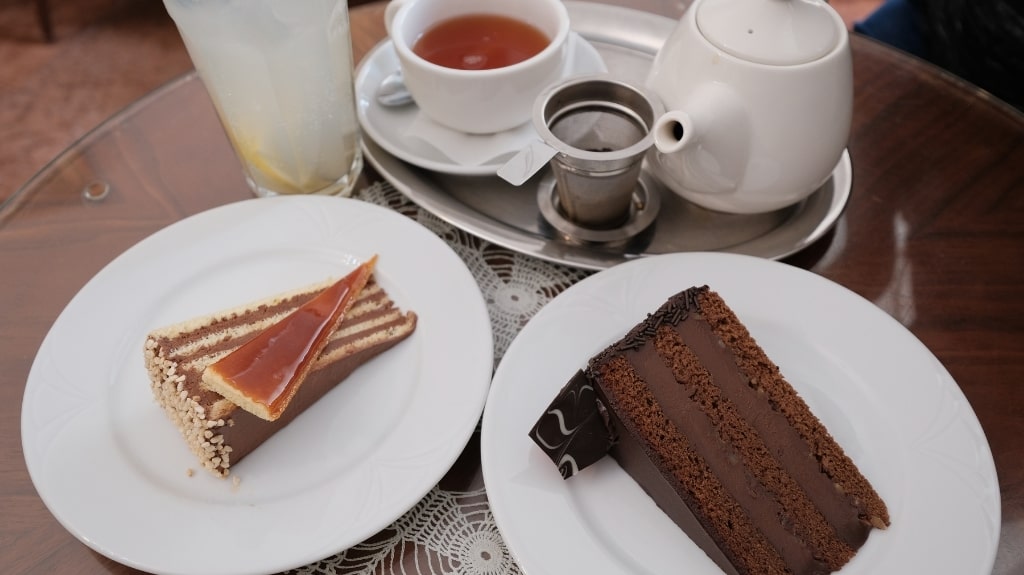
You’ll find delightful food everywhere in the city. For your gastronomical explorations, we have prepared some of the most scrumptious food facts about Budapest. Below, you’ll learn what you should try when visiting the Hungarian capital.
- You can sample Empress Elisabeth’s favorite candies. When Sisi, the Empress of Austria and the Queen of Hungary, lived with her husband Emperor Franz Joseph I in the Buda Castle, she had an incessant craving for spearmint candies and iced coffee. Her favorite sweets were crafted at the Ruszwurm – Budapest’s oldest confectionery. Today, the owners continue to produce their decadent, century-old cakes and mouthwatering pastries. You can find them at Szentháromság Street 7.
- Paprika is the quintessential Hungarian spice. It is generously used in the national cuisine. Hungarians consume over 1 lb (0.5 kg) of paprika powder per person every year. No wonder, as it is the main condiment in traditional dishes, such as goulash and chicken paprikash.
- Love homemade food? Visit an étkezde. Budapest is teeming with dining and drinking options. But if you want to dip yourself into the unknown and feel the truly local side of the city, you should go to an étkezde. These lunch-only restaurants sport fewer than a dozen tables that serve grandma’s recipes at wallet-friendly prices. Expect a simple décor, a limited number of dishes on the menu, and sharing your table with a stranger.
- A Budapest leftover dish became omnipresent in Hungary. One night in 1846, the Hungarian poet József Székely showed up at a restaurant shortly before closing time. He wanted something to eat, and the owners told him what was left. Székely instructed them to mix the leftover pork stew (pörkölt) with sauerkraut. The result was a delicious dish that quickly spread across Hungary. Since then, it has been known as Székely’s Gulyás – named after the poet.

- The city is dotted with ruin bars. From ghettos to lively pubs and restaurants, Budapest’s young people decided to renovate abandoned houses and turn them into ruin pubs. In a romkocsma, you can find yourself at the epicenter of parties, wild nightlife, and festivals. Food and drinks are good and inexpensive. For the best experience, join a pub crawl guided tour!
- When in Budapest, visit Szimpla Kert. It’s the city’s Number 1 ruin bar and one of the best bars in the world. You’ll be greeted with an eclectic mixture of live music, underground spirit, and peculiarly-designed rooms.
- Locals don’t clink beer glasses in Budapest. In 1848, the Hungarian Revolution was overthrown by the Habsburgs. To celebrate their victory, Austrians cheered with beer. 173 years later, Hungarians still don’t clink their beer glasses.
- Beer fan? You’ll love sipping the hoppy drink while soaking in a tub of beer. Next to mineral pools, spas in Budapest also offer a dip in a beer tub accompanied by unlimited drinks. For the duration of the session, you can not only enjoy the therapeutic effects of the beer ingredients on your skin. You can also devour the hoppy drink from taps mounted next to you. For beer lovers, this makes deciding whether to visit Prague or Budapest quite difficult.
Did You Choose Your Favorite Budapest Facts?
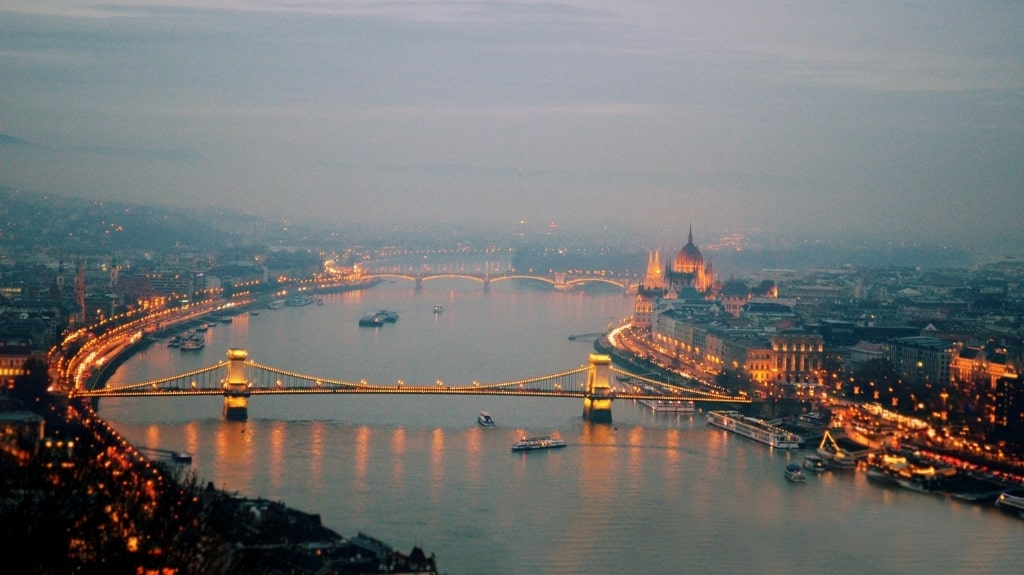
If Budapest hasn’t been one of your must-visit spots, we bet this guide has pushed it up the list.
The Hungarian capital is chock-full of arts, history, spa centers, mind-blowing landmarks, and unique bars.
Armed with these 33 surprising facts about Budapest, and our helpful travel tips, you’ll discover The Queen of the Danube like a pro.
Just take it easy on the beer and paprika, will you?
Start Planning Your Trip to Budapest with Our BEST Recommendations:
⭐ Top Tours in Budapest ⭐
📍 Budapest Grand Tour – the highlights of Buda and Pest, including the Parliament.
📍 Danube Cruise with Prosecco – unlimited prosecco and Budapest at night.
⭐ Best Accommodations in Budapest ⭐
🏨 Monastery Boutique Hotel Budapest – our top pick near Buda’s main attractions.
🏨 Bohem Art Hotel – this funky, hip hotel has the vibe of an art gallery.
⭐ Easiest Transportation Options in Budapest ⭐
🚍 Budapest Card – enjoy discounts, free travel, and entrances to museums.
🚍 Discover Cars – compare and find the best rates for car rentals.
Before we let you go, we’d love to hear:
Which is your favorite Budapest fact?
Let us know in the comments below.




